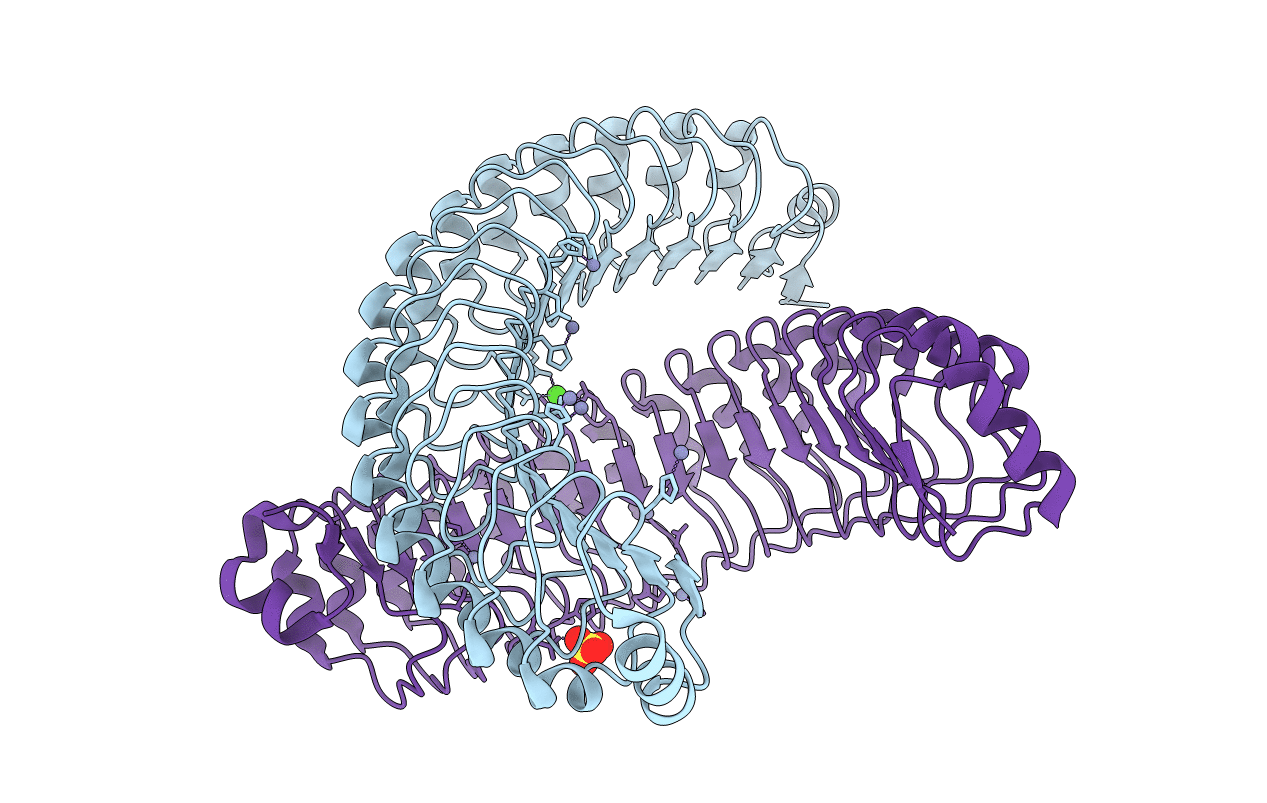
Deposition Date
2014-07-11
Release Date
2015-06-03
Last Version Date
2024-10-16
Entry Detail
PDB ID:
4U08
Keywords:
Title:
Structure of Leptospira interrogans LRR protein LIC11098
Biological Source:
Source Organism:
Host Organism:
Method Details:
Experimental Method:
Resolution:
1.95 Å
R-Value Free:
0.23
R-Value Work:
0.21
R-Value Observed:
0.21
Space Group:
P 32 2 1


